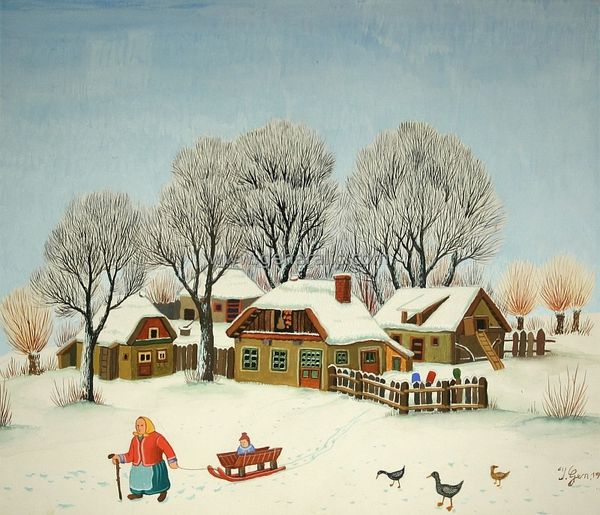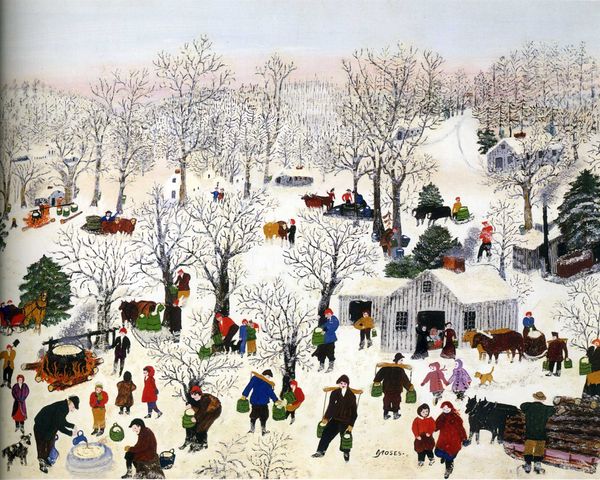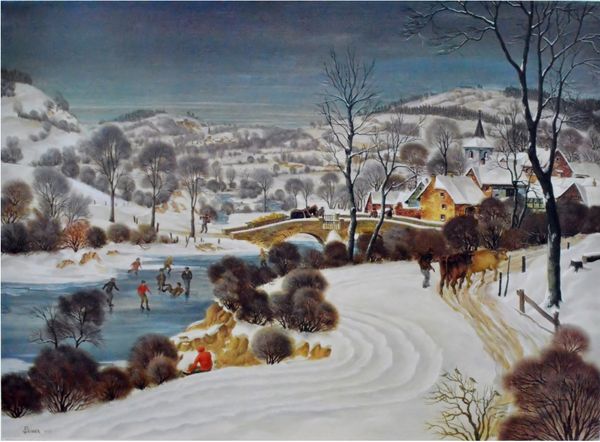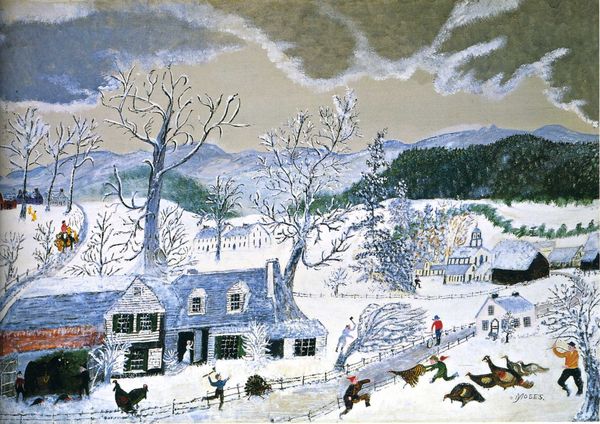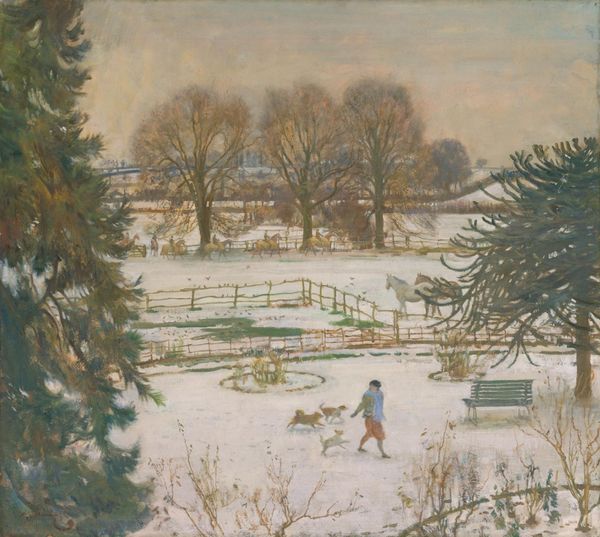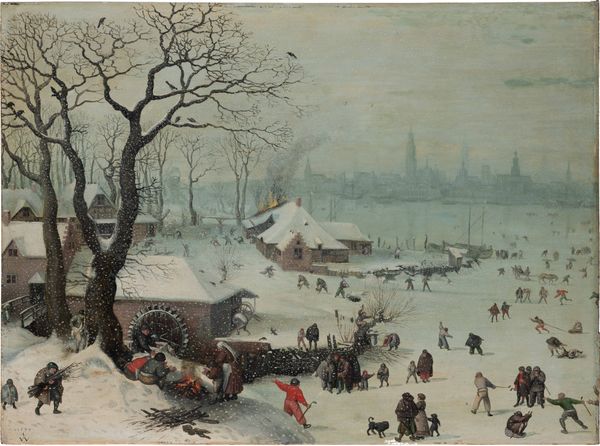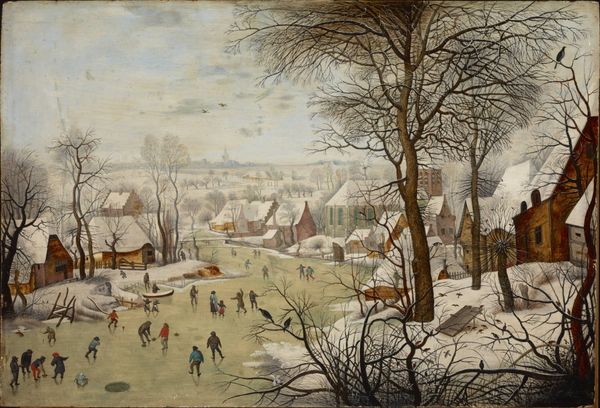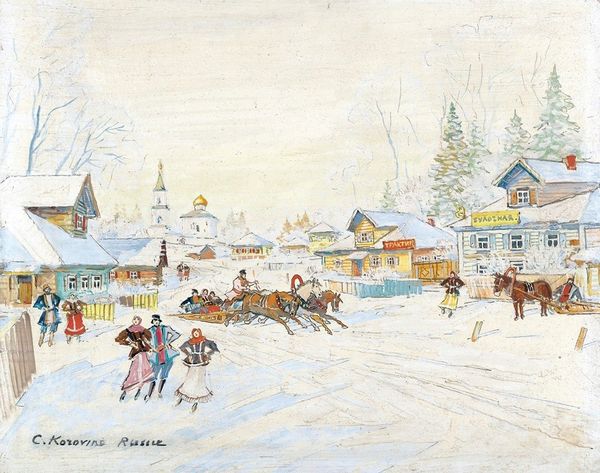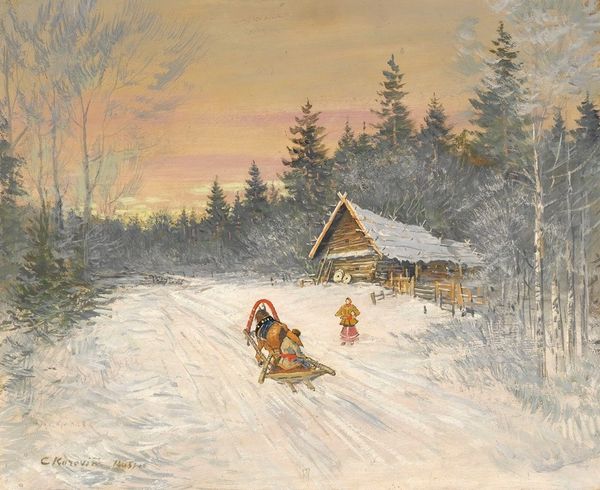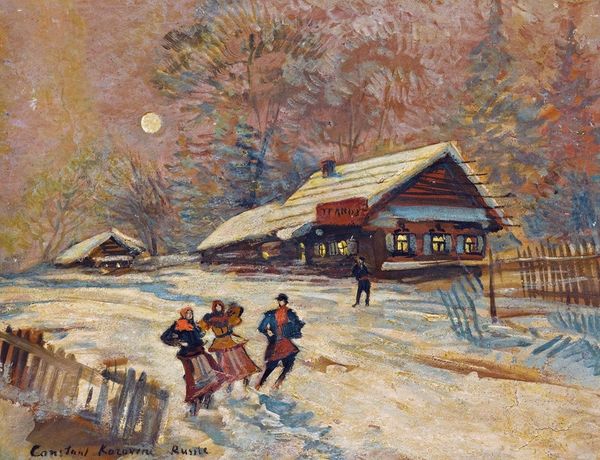
painting, plein-air, oil-paint
#
narrative-art
#
painting
#
plein-air
#
oil-paint
#
landscape
#
naive art
#
genre-painting
#
modernism
#
watercolor
#
realism
Copyright: Modern Artists: Artvee
Curator: At first glance, it's utter chaos, in the best way! Bodies, sleds, dogs, all hurtling downhill with joyous abandon. There's such dynamism, captured in a moment of pure winter play. Editor: Indeed. We’re looking at Norman Rockwell’s “Landscapes; Sledding” created in 1959 using oil on canvas. What seems like a simple scene is steeped in cultural iconography about American childhood. Rockwell taps into a collective memory here, doesn’t he? Curator: Absolutely. Sledding resonates as this near universal experience – the cold air, the thrill of the ride, the inevitable spills. But, for me, beyond just a nice memory, I am struck by its representation of a time gone by. How might we critically interpret that? Editor: I agree, its naive realism speaks volumes about idealized versions of the mid-century American childhood experience. Look at the positioning of the colonial revival-style home atop the hill overlooking the chaos, symbolizing the home at the core of the American Dream, secure and solid amidst the joyful chaos. Curator: It is interesting to notice the dogs too—always part of the family it seems, romping down the snowy bank! The sled itself—a sort of freedom vehicle, echoing deeper collective needs to conquer speed and terrain, right? But notice too how they almost mirror the architectural shape of the roofs and the hill. Editor: It certainly points to our connection to landscapes. More crucially though, this depiction also obscures the historical complexities of the period. The absence of marginalized experiences is an active choice that needs unpacking. Curator: That's valid; still, the scene evokes these notions of boundless optimism. It makes me reflect on how symbols shape our sense of self—both individually and as part of a group. It is all a visual mythology in action! Editor: A potent visual mythology, indeed. The warmth radiating from that idyllic home at the summit must acknowledge whose history it’s prioritizing and for what purpose—whose inclusion versus continued systematic marginalization? Food for critical reflection as we walk on. Curator: Well, with an added layer of complexity in mind, hopefully it opens new pathways for further interpreting visual representations of the American family and childhood. Editor: Precisely, onward!
Comments
No comments
Be the first to comment and join the conversation on the ultimate creative platform.

